Install Window Shutters 1
This publication is part 2 of 6 in the Education + Action = Wind Damage Mitigation series. For the rest of the series, visit https://edis.ifas.ufl.edu/topic_series_wind_damage_mitigation.
Unprotected windows are one of the most common locations where storm damage takes place. As covered in the first document in this series, How Safe is Your Home?, broken windows can allow wind and rain inside the house and even lead to roof failure.
What makes a safe window?
People often tape their windows to protect them. Taping windows does not increase the strength of the glass and it will not protect your home from flying debris.
Even shatter-resistant windows can fail when the entire window frame is under enough pressure from wind and debris. Similarly, window films alone are not a complete protective measure. The best way to protect your windows is to install shutters.
How do I choose the right shutters?
Each homeowner should install shutters that best meet their individual needs. Factors such as cost, ease of installation, and degree of protection are important considerations.
Shutters provide protection from flying (wind-borne) debris impacts and/or wind pressure for windows, French doors, sliding glass doors, and other openings. No matter what type of shutter you choose, proper installation is important to ensure best performance.
Issues to Consider
If maximum protection is your goal, select products approved by the thorough Miami-Dade County standards (see product search link below). But simply installing shutters is not enough. It is important to use proper construction techniques to maintain your shutter strength and reduce the potential for missile debris. These issues include the following:
-
Securing loose outdoor items including patio furniture, garbage cans/recycling bins, plant pots, etc.
-
Attaching shutters to your home's structural framing, not window or door frames.
-
Using corrosion-resistant materials for all exposed parts of the shutter system, including shutter panels, fasteners, etc.
Other Resources
Miami-Dade County: Permitting, Environment and Regulatory Affairs—Product Control Search: https://www.miamidade.gov/building/pc-search_app.asp
National Oceanographic and Atmospheric Administration (NOAA), Atlantic Oceanographic and Meteorological Laboratory (AOML) Hurricane Research Division: Flyers. Instructions for building plywood hurricane shutters: https://www.aoml.noaa.gov/hrd/flyers/BuildingWoodenShutters.pdf
What shutter options are available?
Automatic Rolldown
Price $$$$$
These shutters roll down tracks from a box above each protected opening. They are generally made of metal and lock at the bottom.
Pros: Preinstalled, easy to use, can be motorized
Cons: Very expensive
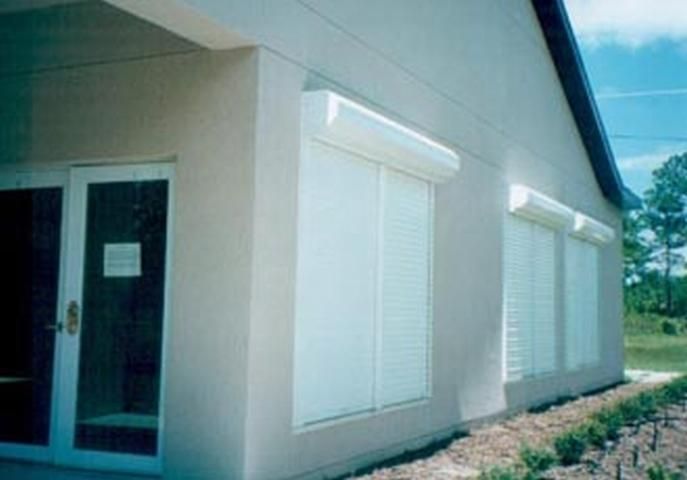
Credit: UF/IFAS Extension St. Lucie County
Accordion
Price $$$
These shutters pull together from the side of each protected opening. They are generally made of metal and lock together or to a middle divider.
Pros: Preinstalled, easy to use
Cons: Somewhat expensive, architecturally less appealing
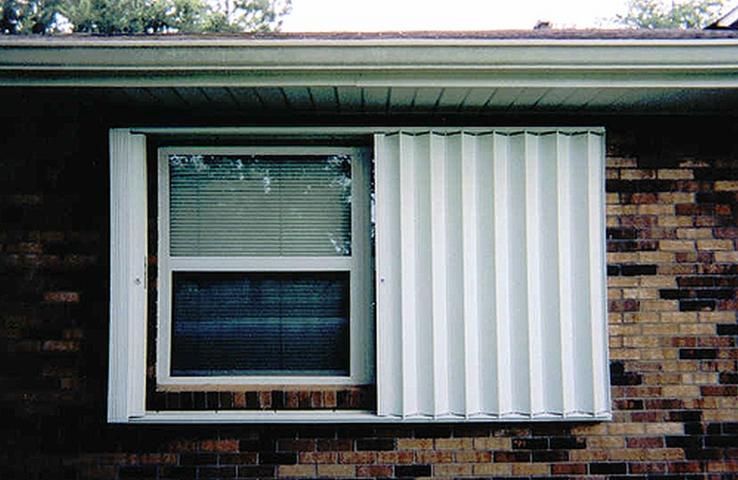
Credit: http://www.hurricaneshuttercompany.com
Awning
Price $$$
These shutters drop down and lock in place. They are made of metal or fiberglass and provide full window shade when not in use.
Pros: Preinstalled, easy to use
Cons: Somewhat expensive, architecturally less appealing
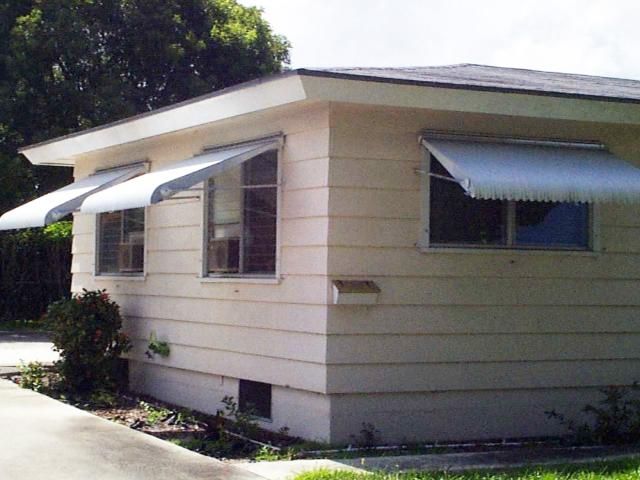
Credit: National Oceanic and Atmospheric Administration (NOAA), Atlantic Oceanographic and Meteorological Laboratory (AOML), Hurricane Research Division (HRD)
Bahama Awning and Colonial Shutter
Price $$$
These louvered panel shutters are either Awning (which provide partial shade when not in use) or Colonial style.
Pros: Preinstalled, easy to use, architecturally appealing
Cons: Somewhat expensive, strength varies greatly by design
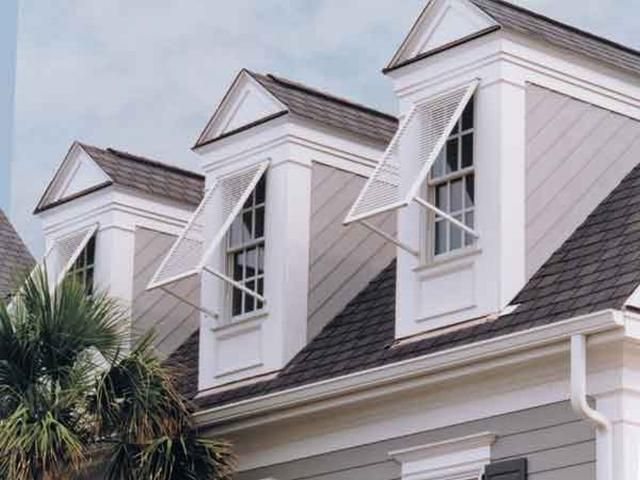
Credit: http://www.stormshutters.com
Hurricane Screen
Price $$–$$$
These shutters are made from a partially porous reinforced fabric that reduces wind pressure and debris impact damage.
Pros: Fairly inexpensive, allow light through, easy to store
Cons: Debris impacts can break windows in contact with screen, best for large non-glazed openings
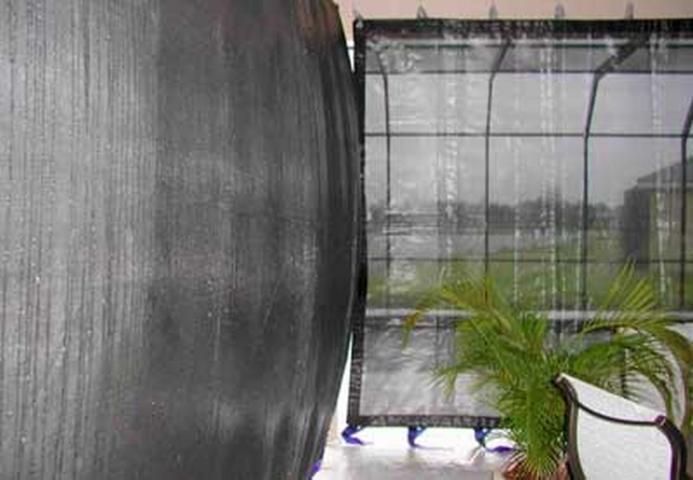
Credit: http://www.stormshutters.com
Storm Panel
Price $$
These shutters must be stored and installed temporarily for a storm. They are made of steel or aluminum panels that are locked into a preinstalled steel channel above/below the protected opening, or they can be anchored or bolted directly to the house.
Pros: Inexpensive, strong
Cons: Often heavy, difficult to install and store
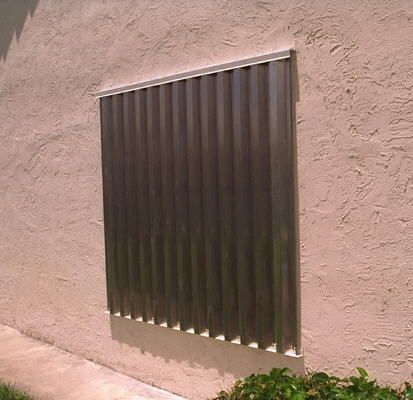
Credit: National Oceanic and Atmospheric Administration (NOAA), Atlantic Oceanographic and Meteorological Laboratory (AOML), Hurricane Research Division (HRD)
Plywood
Price $
For more information, see the publication Protect with Plywood (https://edis.ifas.ufl.edu/ae412).



